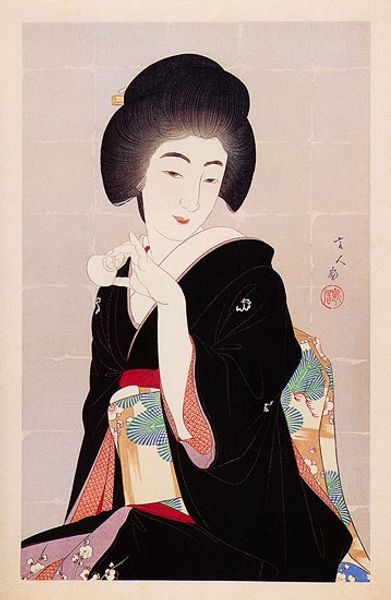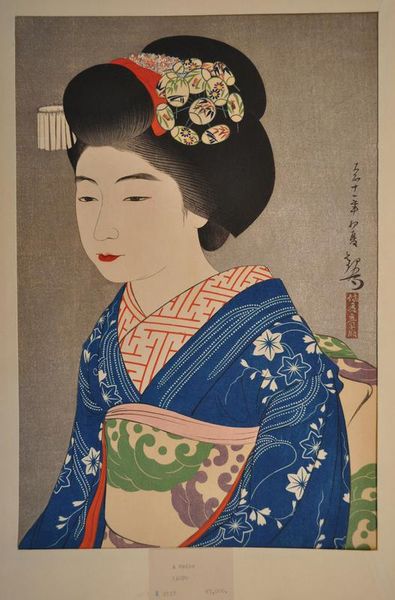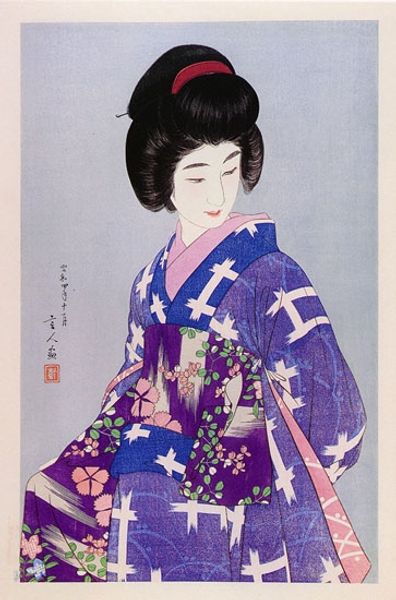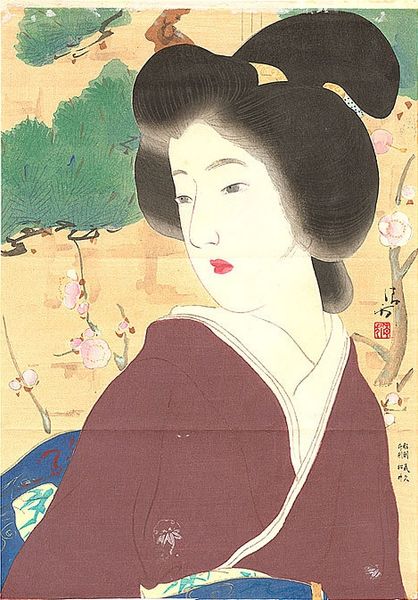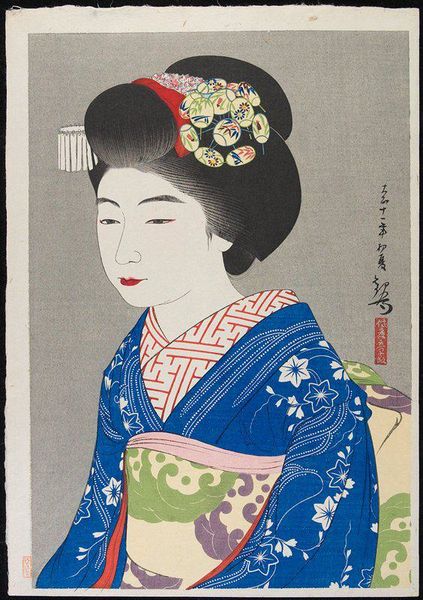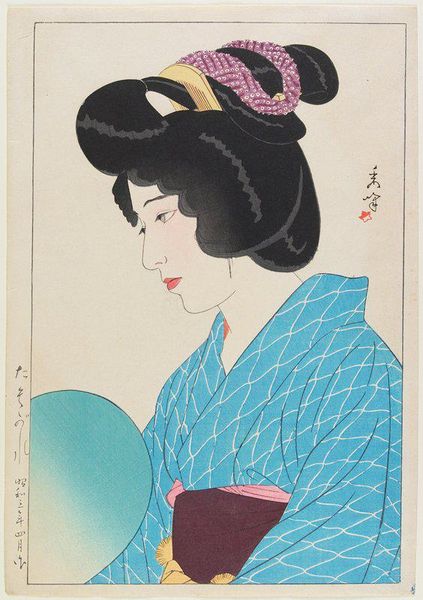
Copyright: Public domain
Editor: Here we have "Ichikawa Shocho II as Oman," a woodblock print created around 1920 by Yamamura Toyonari. The figure's face is so still and composed, but the swirling floral kimono gives her a sense of liveliness. How would you interpret this work? Curator: This piece speaks volumes about the evolving role of women in Japanese society during the Taisho period. Kabuki theater, historically dominated by male actors even in female roles, faced increasing social commentary. Does this portrayal challenge or reinforce conventional representation of women on stage and in the public sphere? Editor: That's a great point! I hadn’t considered the socio-political element so directly. It seems both idealized and perhaps slightly satirical in its stylization, right? The artist seems aware of the artifice inherent in these staged representations. Curator: Exactly. And the print medium itself—ukiyo-e traditions adapting to modern times—became more accessible, democratizing art. Prints like these became tools for constructing and circulating specific notions about performers and theatrical culture. What audience did Toyonari envision for this work? Editor: Perhaps fans or a wider public consuming celebrity culture. I wonder how this portrayal of Ichikawa Shocho II might have impacted their actual stage performances or their reception by critics and audiences at the time. Curator: Indeed. This piece invites us to consider the fascinating intersections of art, theater, and public image within a rapidly changing social landscape. Editor: Thank you, I see the image in a totally different light now! Thinking about the relationship between theater and societal perceptions opens it up so much.
Comments
No comments
Be the first to comment and join the conversation on the ultimate creative platform.





